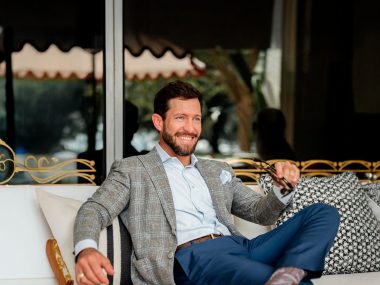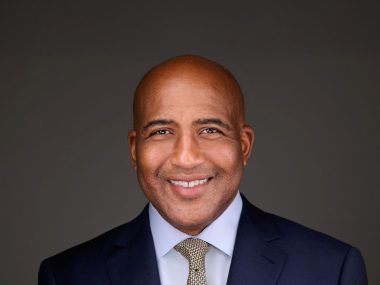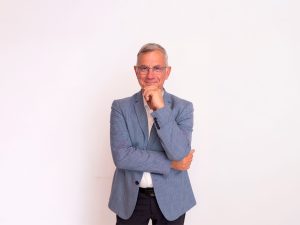Shifting mindsets requires intention, which is why daily practices are often the most effective way to change your perspective. The same logic applies to building inclusive workplaces. When you view inclusion as a mindset shift rather than an HR initiative, it becomes clear that it takes steady, everyday effort from leaders who examine how their decisions and habits shape the environment around them.
For Başak Büyükçelen, inclusion is a daily practice. As CEO of Pressbooks, a company that builds inclusive digital publishing tools for educators and institutions, she leads with a systems‑oriented, people‑first approach that informs every operational decision. From leading global teams to spearheading a four‑day workweek, her work reflects an ongoing commitment to designing structures that help people thrive.
Throughout her career, she has witnessed one common misconception across organizations: diversity is often mistaken for inclusion. “People assume they are inclusive just because someone on the team is different,” she says. “But if you’re not actually using those different perspectives when making decisions, you’re not doing a good job seeking diversity.”
It’s a perspective shaped by years spent navigating multicultural environments and leading remote teams across continents, and a willingness to examine her own assumptions and biases with honesty and curiosity. “I fell into the same trap,” she shares. “I thought that because we had a couple of folks from underrepresented groups in the team, we were diverse. But what does that matter if decisions are being made without challenge?”
The Hidden Barriers Leaders Often Miss
One of the most important lessons Büyükçelen learned came from a book she often recommends: The Culture Map. Its exploration of cultural communication norms illuminated something she had been observing in real time. “I had a very diverse team already, but I wasn’t hearing diverse voices,” she says. Team members raised in more hierarchical cultures often believe it is inappropriate to disagree openly, even when they hold valuable perspectives. Others may be shy, introverted, or overshadowed by more dominant personalities.
This is where leadership must step in. “It’s our responsibility to go and seek those different opinions,” she says. “If the loudest voices at the table suppress the quieter ones, then something is wrong.”
At Pressbooks, this insight shaped a concrete policy: every new employee completes two required trainings: one focused on working across cultures, and another on active listening. As Büyükçelen explains, the aim is to help colleagues recognize moments when others may not feel comfortable speaking up.
Leaders, she believes, must also examine their own presence. “Being vulnerable and human as a boss makes a big difference,” she says, reflecting on a moment when she joined a meeting wearing a lobster bib because she knew she’d spill food at lunch. A newer colleague told her she had never seen a CEO show that level of vulnerability. It broke the ice. “That tiny moment made her feel comfortable enough to bring her full self to work,” Büyükçelen says. “It’s not in any leadership textbook, but it matters.”
Inclusion as a System, Not a Slogan
These hidden barriers, from cultural norms that discourage disagreement to dominant voices that overshadow quieter ones, become far easier to address when inclusion is treated as something operational. “Hiring is just step one. Onboarding them well, encouraging them to disagree, making sure dominant voices don’t drown others out, these things are what make inclusion operational,” she says.
When inclusion becomes part of the system, the role of the leader shifts toward helping people navigate disagreement with clarity and mutual respect. “Nobody teaches us how to help two people who brutally disagree find common ground,” she says. “Yet it’s the most fundamental part of management.” Büyükçelen believes inclusion is ultimately behavioral, shaped by rituals, habits, and the day‑to‑day practices that allow every voice to be heard.
Designing for the Future While Protecting the Human Core
Büyükçelen sees this systems-driven view of inclusion extending naturally into how organizations adopt technology. She is a strong advocate for people-first innovation and critiques the way AI and automation are being used. “Instead of using AI to help people work better and under more humane conditions, many companies are laying off hundreds or thousands and then asking the remaining team to work even harder,” she says.
It stands in sharp contrast to Pressbooks’ four‑day workweek, which she guided into practice. For her, it is proof that technology can support sustainable work rather than intensify burnout. “We treat burnout like a trophy,” she says, “but it isn’t one. It’s a sign that something is fundamentally wrong with how we work.”
Her frustration extends to emerging work norms such as the 996 model growing out of China and influencing Silicon Valley. “We have all these tools that could help us be more productive and happier. Instead, some leaders want people working six days a week. Why? How is that sustainable?”
Her point is simple: operational frameworks for inclusion must also protect well-being. They must acknowledge that people are not machines.
To connect with Başak Büyükçelen, visit her on LinkedIn or learn more on her website.









